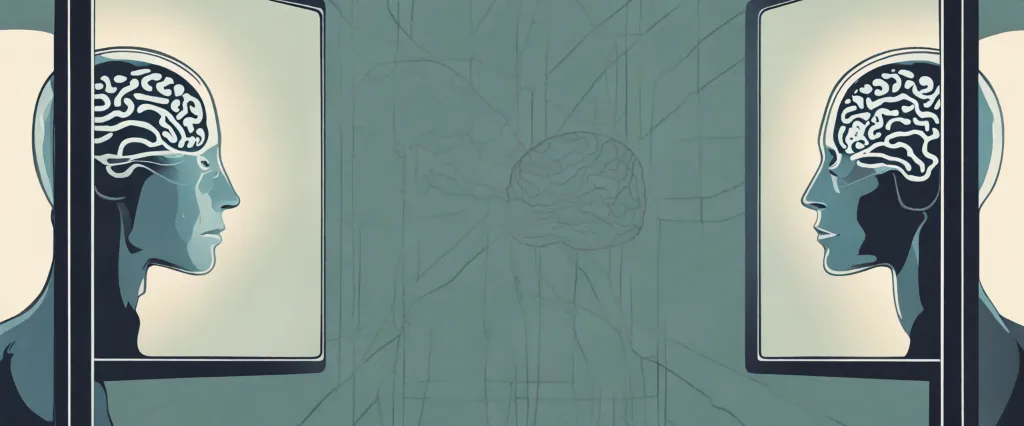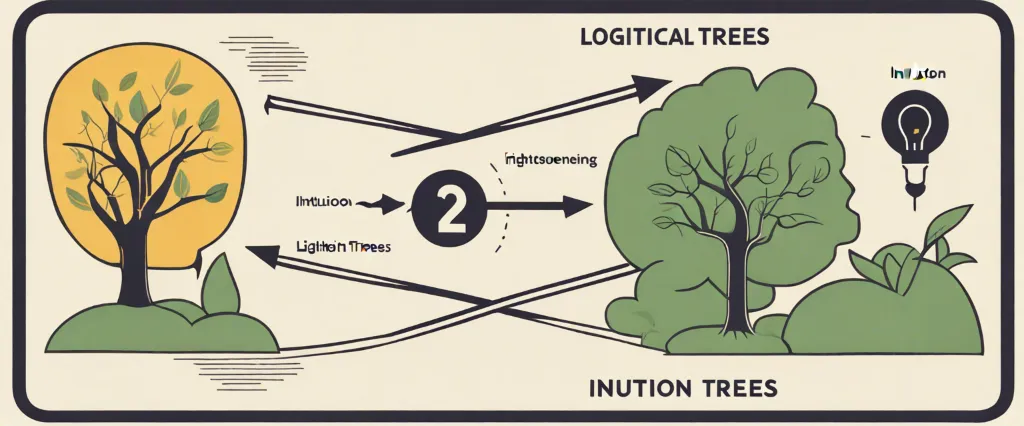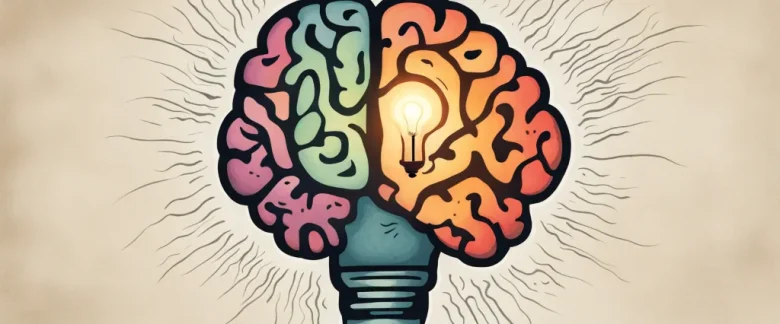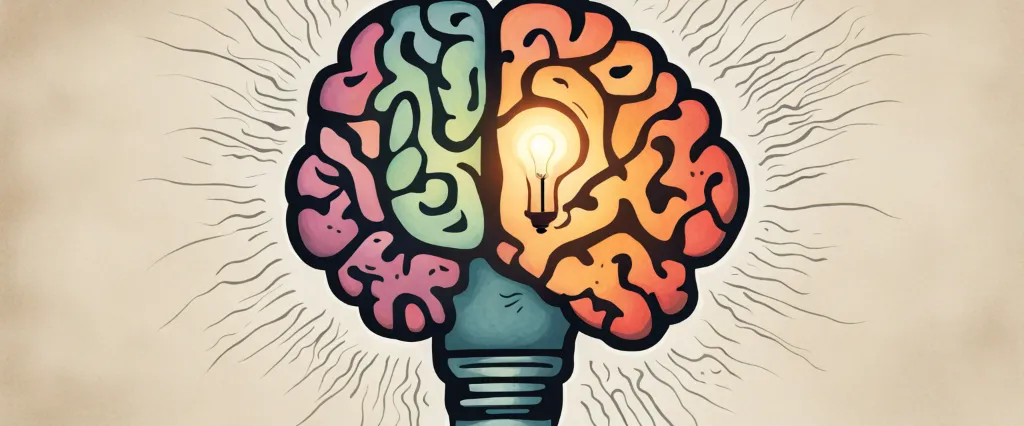In The Mind’s I, explores the concept of self and consciousness through various philosophical and psychological perspectives. Douglas R. Hofstadter, a renowned cognitive scientist and author, is best known for his Pulitzer Prize-winning book, Gödel, Escher, Bach: An Eternal Golden Braid, which delves into the connections between logic, art, and music. With The Mind’s I, Hofstadter continues to challenge readers to question the nature of identity and the mind in profound and thought-provoking ways.
Chapter 1: Introduction to the exploration of consciousness and the self.
In Chapter 1 of “The Mind’s I” by Douglas R. Hofstadter, the exploration of consciousness and the self is introduced through various philosophical and psychological perspectives. The chapter delves into the complexity of self-awareness and the nature of consciousness, posing questions about the relationship between the mind and the body, as well as the existence of a unified self.
Hofstadter presents thought experiments and hypothetical scenarios that challenge traditional notions of identity and consciousness, inviting readers to consider the extent to which our perceptions and experiences shape our sense of self. The chapter also discusses the concept of the soul and the role of language in shaping our understanding of ourselves and the world around us.
Overall, Chapter 1 lays the groundwork for a deeper exploration of the mind and the self, setting the stage for further inquiry into the nature of consciousness and the complexities of human cognition. Through engaging prose and thought-provoking ideas, Hofstadter invites readers to critically examine their own beliefs and assumptions about the nature of consciousness and the self.
Chapter 2: Examination of philosophical and scientific perspectives on the mind.
In Chapter 2 of “The Mind’s I,” Douglas R. Hofstadter explores the philosophical and scientific perspectives on the mind. He delves into questions about the nature of consciousness, self-awareness, and the relationship between the mind and the body.
Hofstadter presents various philosophical theories, such as dualism, materialism, and behaviorism, that attempt to explain the mind-body problem. Dualism posits that the mind and body are separate entities, while materialism argues that the mind is a product of physical processes in the brain. Behaviorism focuses on observable behaviors rather than inner mental states.
The chapter also discusses scientific advancements in understanding the mind, including brain imaging techniques and neural networks. These technologies have provided insight into how the brain functions and how it may give rise to consciousness.
Hofstadter raises thought-provoking questions about the limitations of human understanding and the mysteries of consciousness. He encourages readers to consider the complexity of the mind and the implications of different philosophical and scientific perspectives on our understanding of ourselves. Overall, Chapter 2 serves as a comprehensive examination of the diverse viewpoints on the mind and sets the stage for further exploration in the book.
Chapter 3: Analysis of thought experiments and their implications for understanding the mind.
In Chapter 3 of “The Mind’s I,” Douglas R. Hofstadter explores various thought experiments that challenge our understanding of the mind and consciousness. He delves into the implications of these experiments for our perception of self, intelligence, and the nature of reality.
Hofstadter examines classic philosophical scenarios such as the Chinese room experiment, where a person inside a room follows instructions to respond convincingly to questions in Chinese, without actually understanding the language. This thought experiment raises questions about the distinction between behavior that mimics intelligence and genuine understanding.
Another thought experiment discussed is Mary’s Room, where a scientist who knows everything about the physical processes of color experiences seeing red for the first time. This scenario challenges the idea that knowledge of physical processes alone can fully explain mental experiences.
Through these thought experiments and others, Hofstadter explores the limitations of our current understanding of the mind and consciousness. He emphasizes the importance of considering subjective experience, intentionality, and self-awareness in shaping our understanding of intelligence and the nature of the mind. Ultimately, the chapter prompts readers to rethink their assumptions about the mind and encourages them to delve deeper into the complexities of consciousness.
Chapter 4: Delving into the nature of identity and self-awareness.

Chapter 4 of The Mind’s I delves into the complex nature of identity and self-awareness. The chapter explores various philosophical perspectives on the nature of the self and the interconnectedness of consciousness and personal identity. The concept of “I” is examined through the lens of thought experiments and hypothetical scenarios that challenge traditional notions of selfhood and individual identity.
One of the central themes in the chapter is the idea that our sense of self is shaped by our interactions with others and our ability to reflect on our own thoughts and experiences. The authors question whether our consciousness and identity are truly unique and independent or if they are products of our environment and relationships with others.
Through engaging and thought-provoking discussions, the chapter challenges readers to consider the boundaries of selfhood and the implications of a fluid and interconnected sense of identity. Ultimately, the chapter challenges readers to question their assumptions about the nature of consciousness and to explore the complexities of identity and self-awareness in new and insightful ways.
Chapter 5: Discussions on artificial intelligence and the nature of intelligence.
In Chapter 5 of The Mind’s I, Douglas Hofstadter presents a series of discussions on artificial intelligence and the nature of intelligence. The chapter delves into the complexities of defining and understanding what intelligence truly is, and explores the question of whether machines can possess true intelligence. Hofstadter argues that intelligence is not simply the ability to process information quickly or solve complex problems, but also involves creativity, self-awareness, and emotional depth.
The chapter also addresses the concept of artificial intelligence and whether machines can ever achieve consciousness. Various viewpoints are presented, with some arguing that machines can never truly be conscious and others suggesting that consciousness is simply a complex form of computation that machines could potentially achieve. Different thought experiments and scenarios are explored to help readers think about the nature of intelligence and consciousness in new and thought-provoking ways.
Overall, Chapter 5 challenges readers to reconsider their assumptions about intelligence and artificial intelligence, and prompts them to contemplate the complexities of the human mind and the potential for machines to mimic or surpass human levels of intelligence.
Chapter 6: Contemplations on the boundaries between the self and the external world.
In Chapter 6 of “The Mind’s I” by Douglas R. Hofstadter, the focus is on contemplating the boundaries between the self and the external world. The chapter delves into philosophical discussions about the nature of consciousness, perception, and the relationship between the mind and the physical world.
Various thought experiments and scenarios are presented to challenge the reader’s understanding of where the self ends and the external world begins. The chapter explores questions such as: What defines the self? Is our perception of reality accurate? How do we know that our experiences are not just illusions created by our minds?
Throughout the chapter, Hofstadter and his co-author Daniel C. Dennett prompt readers to consider the intricacies of consciousness and the limitations of human perception. They discuss how our minds construct our sense of self and reality, and examine the implications of these concepts on our understanding of the world around us.
Overall, Chapter 6 encourages readers to reflect on the complex relationship between the self and the external world, challenging traditional notions of self-awareness and expanding our understanding of the nature of consciousness.
Chapter 7: Reflections on the implications of self-reference and recursion in cognition.
In Chapter 7 of “The Mind’s I” by Douglas R. Hofstadter, the implications of self-reference and recursion in cognition are explored. The chapter delves into how the concepts of self-reference and recursion play a crucial role in shaping human cognition and consciousness.
Self-reference is the ability to refer to oneself within a system, leading to a form of reflexivity that allows for introspection and self-awareness. Recursion, on the other hand, involves the repetition of a process within itself, leading to complex and nested patterns of thought.
Hofstadter argues that these concepts are fundamental to understanding human intelligence and creativity. They provide a framework for exploring consciousness, language, and the nature of thought itself. Through examples such as paradoxes, puzzles, and thought experiments, the chapter challenges readers to think deeply about the nature of their own minds and the implications of self-reference and recursion in shaping the human experience.
Overall, Chapter 7 of “The Mind’s I” encourages readers to reflect on how our ability to reference ourselves and engage in recursive processes influences our perception of reality, our understanding of the world, and our sense of self. It invites readers to consider the profound implications of these concepts for our understanding of cognition and consciousness.

Chapter 8: Provocations to consider the mysteries and complexities of the human mind.
In Chapter 8: “Provocations to consider the mysteries and complexities of the human mind” of the book “The Mind’s I” by Douglas R. Hofstadter, the authors present a series of thought-provoking essays and stories that challenge readers to consider the fascinating intricacies of the human mind. The chapter is filled with philosophical musings on topics such as artificial intelligence, self-awareness, consciousness, free will, and the nature of reality.
One of the central themes of the chapter is the idea that the mind is a complex and mysterious entity that defies easy explanation. Through a series of thought experiments and hypothetical scenarios, the authors encourage readers to question their assumptions about the nature of consciousness and the self.
The chapter also explores the ways in which our minds interact with the world around us, and how our perceptions and beliefs shape our sense of reality. From discussions of artificial intelligence and the ethics of creating conscious beings to reflections on the nature of human identity, “Provocations” challenges readers to consider the profound mysteries that lie at the heart of human cognition.
Overall, this chapter serves as a stimulating exploration of the complexities of the human mind and invites readers to ponder the profound questions that lie at the intersection of philosophy, psychology, and artificial intelligence.
After Reading
“The Mind’s I” by Douglas R. Hofstadter and Daniel C. Dennett is a thought-provoking exploration of the nature of consciousness and the self. Through a collection of essays, stories, and philosophical musings, the book delves into the complexities of the mind and how it shapes our perception of reality. Ultimately, “The Mind’s I” challenges readers to question their own understanding of consciousness and to consider the implications of our subjective experience.
1. “Gödel, Escher, Bach: An Eternal Golden Braid” by Douglas R. Hofstadter – This book explores the connections between mathematics, art, music, and language, much like “The Mind’s I.”
2. “I Am a Strange Loop” by Douglas R. Hofstadter – Another thought-provoking book by the author that delves into the nature of consciousness and identity.
3. The Society of Mind” by Marvin Minsky – This book offers a theory of how the mind works, exploring how different mental processes work together to create intelligence.
4. “Consciousness Explained” by Daniel C. Dennett – Dennett tackles the elusive nature of consciousness and provides insights into how we can understand the mind.
5. The Selfish Gene” by Richard Dawkins – While not directly related to the topic of consciousness, this book offers a fascinating perspective on the role of genes in shaping behavior and evolution. It may provide interesting insights into the nature of the mind.




